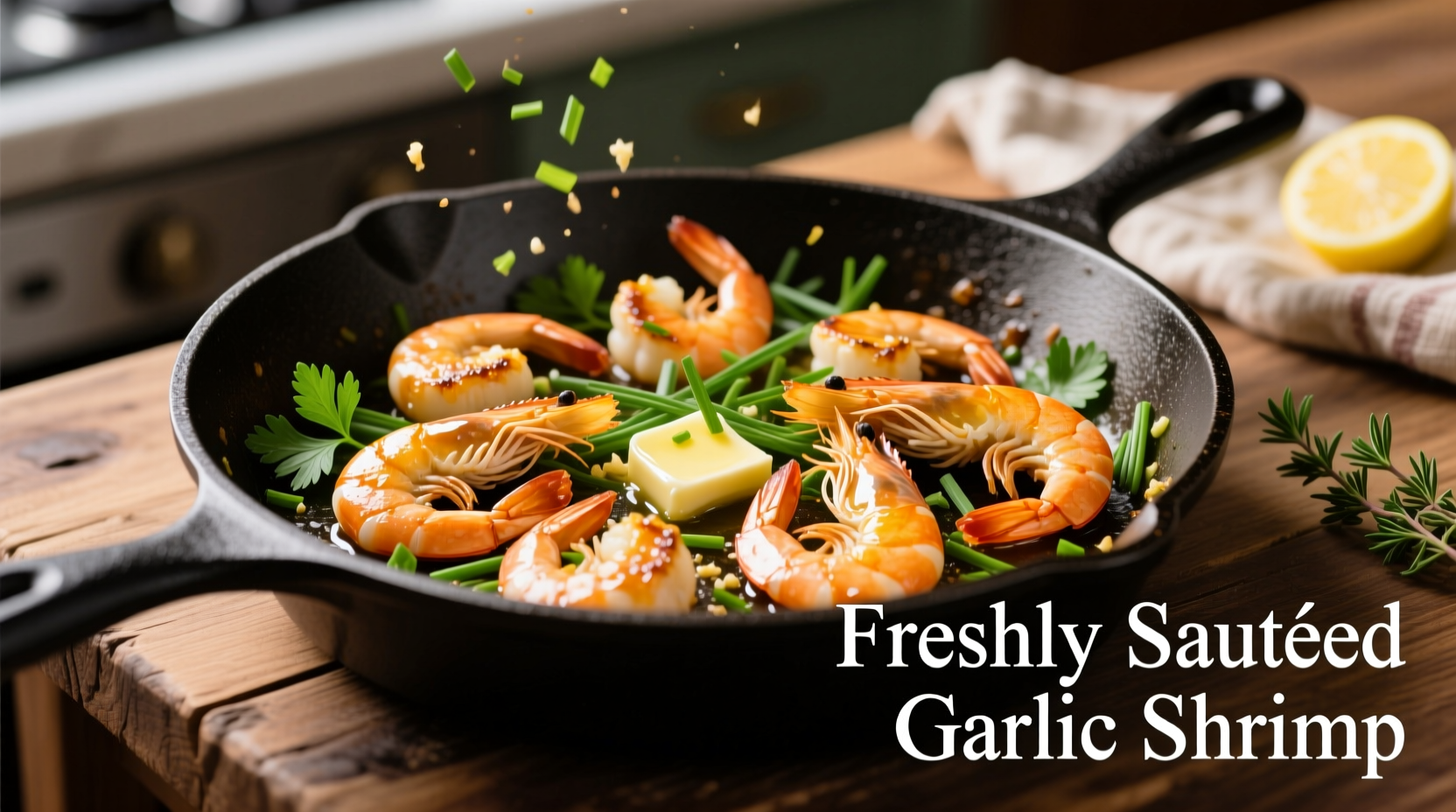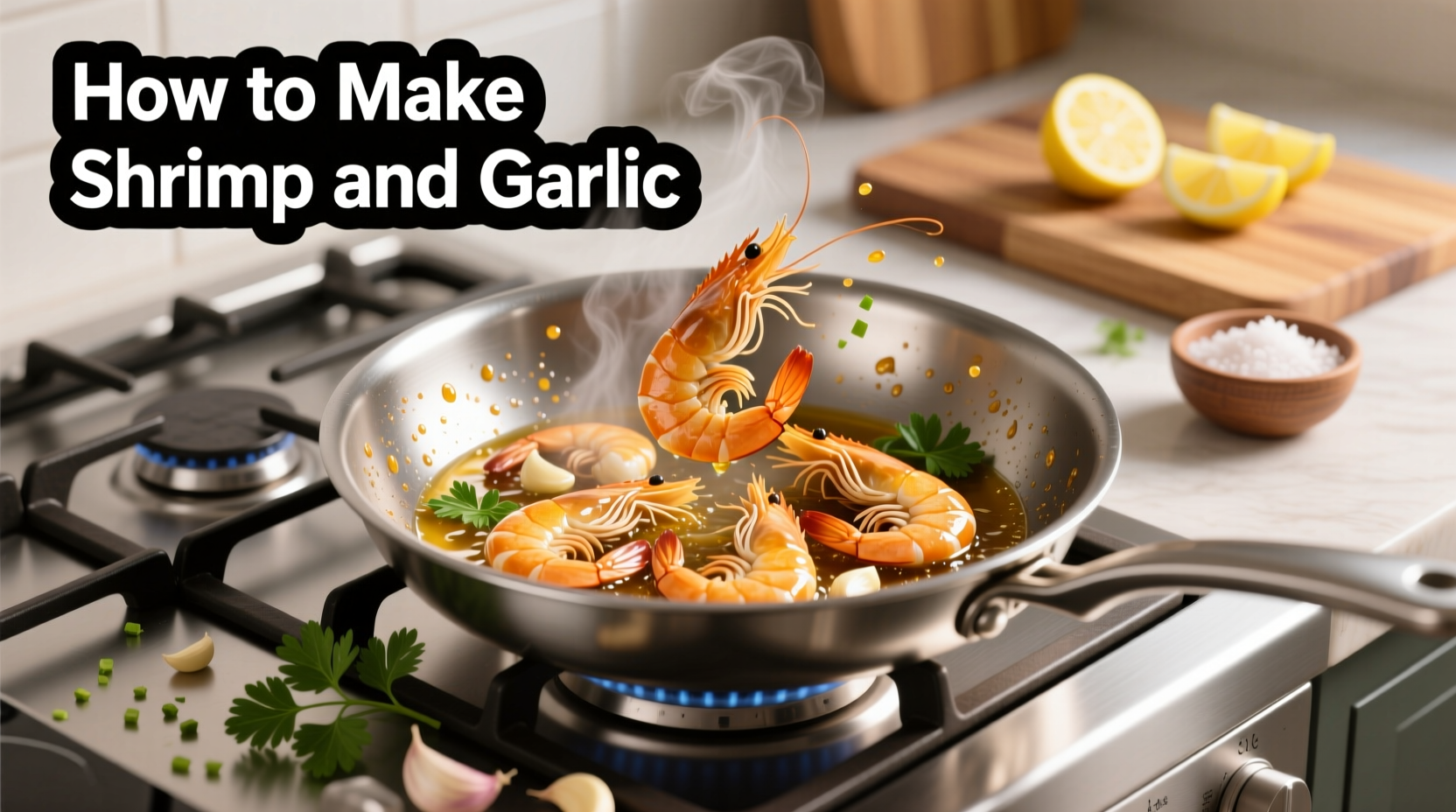The Secret to Perfect Garlic Shrimp Every Time
Garlic shrimp is one of the fastest, most versatile seafood dishes you can make. But getting that delicate balance of plump, tender shrimp with fragrant, golden garlic (not bitter, burnt garlic) requires understanding a few critical cooking principles. As a professional chef with years of experience, I've perfected this method that guarantees restaurant-quality results at home.
Why This Method Works: The Science Behind Perfect Shrimp
Shrimp cooks incredibly fast due to its delicate protein structure. The key to perfect texture lies in precise temperature control. According to the U.S. Food and Drug Administration, shrimp reaches safe eating temperature at 145°F (63°C), but continues cooking from residual heat. Our method accounts for this carryover cooking to prevent rubbery texture.
| Shrimp Size | Count per Pound | Raw Color | Perfect Cooking Time |
|---|---|---|---|
| Salad | 81-100 | Translucent gray | 1-1.5 minutes |
| Medium | 41-50 | Translucent gray | 1.5-2 minutes |
| Large | 31-35 | Translucent gray | 2-2.5 minutes |
| Jumbo | 21-25 | Translucent gray | 2.5-3 minutes |
This critical timing information comes from the National Fisheries Institute's Seafood Cooking Guide, which compiles data from professional seafood chefs and food scientists. Notice that cooking time increases only slightly with size - larger shrimp don't need proportionally longer cooking because heat penetrates to the center faster than many realize.
What You'll Need: Ingredients and Equipment
For perfect garlic shrimp, you need just 7 simple ingredients:
- 1 pound fresh or properly thawed shrimp (peeled and deveined)
- 4 tablespoons unsalted butter
- 4-5 garlic cloves, finely minced
- 2 tablespoons extra virgin olive oil
- 1/4 teaspoon red pepper flakes (optional)
- Salt and freshly ground black pepper to taste
- 2 tablespoons fresh lemon juice
Essential equipment:
- 12-inch heavy-bottomed skillet (stainless steel or cast iron)
- Wooden spoon or silicone spatula
- Instant-read thermometer (highly recommended)
Step-by-Step: Making Perfect Garlic Shrimp
Preparation: The Critical First Steps
Dry your shrimp thoroughly with paper towels - moisture is the enemy of proper searing. Season lightly with salt and pepper. Mince your garlic finely but not to a paste - you want distinct flavor pockets.
Cooking Process: Timing is Everything
- Heat olive oil and 2 tablespoons butter in skillet over medium-high heat until shimmering (about 2 minutes)
- Add shrimp in single layer, making sure not to overcrowd pan
- Cook 1-1.5 minutes per side until just beginning to turn opaque at edges
- Remove shrimp immediately to prevent overcooking - they'll finish cooking off heat
- Reduce heat to medium, add remaining butter
- Add garlic and red pepper flakes, stirring constantly for 30-60 seconds until fragrant but not browned
- Return shrimp to pan with lemon juice, tossing to coat for 30 seconds
- Remove from heat immediately

Avoiding Common Mistakes: Professional Chef Tips
Don't burn the garlic: Garlic burns at 375°F (190°C), while shrimp needs higher heat to sear properly. The solution? Cook shrimp first, then add garlic to residual heat. This professional technique prevents bitter flavors.
Don't overcook the shrimp: Shrimp continues cooking after removal from heat. Remove them when 75% opaque - they'll reach perfect doneness from residual heat. Overcooked shrimp become tough and rubbery due to protein contraction.
Context matters: This method works best for sautéing, but differs for grilling or baking. For grilled garlic shrimp, marinate first and use indirect heat. For baked versions, reduce garlic cooking time to prevent burning in the oven.
Serving Suggestions and Variations
Serve immediately over pasta, with crusty bread for dipping, or alongside roasted vegetables. For an elegant presentation, garnish with fresh parsley and lemon wedges.
Popular variations:
- Garlic shrimp scampi: Add 1/4 cup dry white wine with the garlic
- Spicy garlic shrimp: Double the red pepper flakes and add a pinch of cayenne
- Creamy garlic shrimp: Stir in 1/4 cup heavy cream after returning shrimp to pan
Storage and Food Safety Guidelines
Store leftovers in an airtight container in the refrigerator for up to 2 days. Reheat gently in a skillet over low heat - microwaving will make shrimp rubbery. According to the USDA Food Safety and Inspection Service, cooked seafood should not be left at room temperature for more than 2 hours (1 hour if above 90°F).
Troubleshooting Your Garlic Shrimp
Problem: Shrimp turned out rubbery
Solution: You overcooked them. Remove shrimp from heat when they're just beginning to turn opaque at the edges. They'll continue cooking from residual heat.
Problem: Garlic burned
Solution: Your heat was too high or you added garlic too early. Always cook shrimp first, then add garlic to reduced heat.
Problem: Dish tastes bland
Solution: Season shrimp properly before cooking and use fresh garlic. Pre-minced garlic from jars lacks flavor intensity.











 浙公网安备
33010002000092号
浙公网安备
33010002000092号 浙B2-20120091-4
浙B2-20120091-4